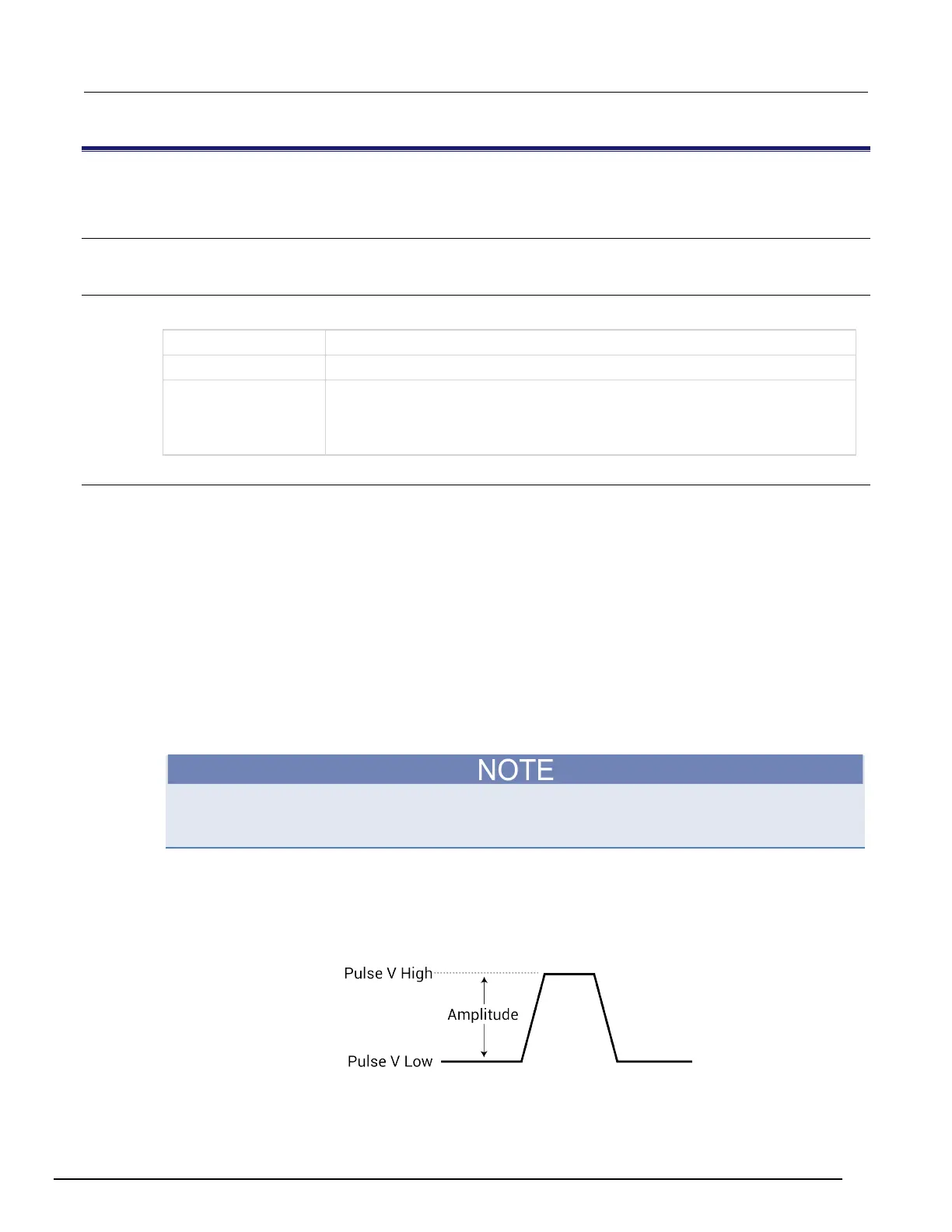-SCS Parameter Analyzer Reference Manual Section 13:
LPT library function reference
4200A-901-01 Rev. C / February 2017 13-159
pulse_vlow
This command sets the pulse voltage low value.
Pulse modes
Standard
Usage
int pulse_lhigh(int instr_id, long chan, double vlow);
The instrument identification code of the pulse card, such as VPU1 or VPU2
Channel number of the pulse card: 1 or 2
Pulse voltage low value in volts (floating point number):
• Fast speed: −5 to +5
• Slow speed: −20 to +20
•
Details
Pulse voltage low can be set independently for each pulse card channel.
For a 50 Ω load:
• 5 V range (lower voltages and higher transitions): Pulse high and pulse low can be set from −5 V
to +5 V.
• 20 V range (higher voltages and lower transitions): Pulse high and pulse low can be set from
−20 V to +20 V.
For a 1 MΩ load:
• 5 V range (high speed): Pulse high and pulse low can be set from −10 V to +10 V.
• 20 V range (high voltage): Pulse high and pulse low can be set from −40 V to +40 V.
The pulse_range command determines the pulse voltage range.
Set the pulse_range command before setting the voltage levels. When using the pulse_range
command, changing the source range after setting voltage levels (in any pulse mode) will result in
voltage levels that are invalid for the new range setting.
As shown below, the pulse voltage low is typically set as the lower pulse voltage value. However,
voltage low can be any valid voltage value. That means pulse voltage low can be less than voltage
high. When started, the pulse transitions from voltage low to voltage high and then back to voltage
low. The voltage remains at voltage low for the remainder of the pulse period.
Figure 513: Pulse V Low and Pulse V High
